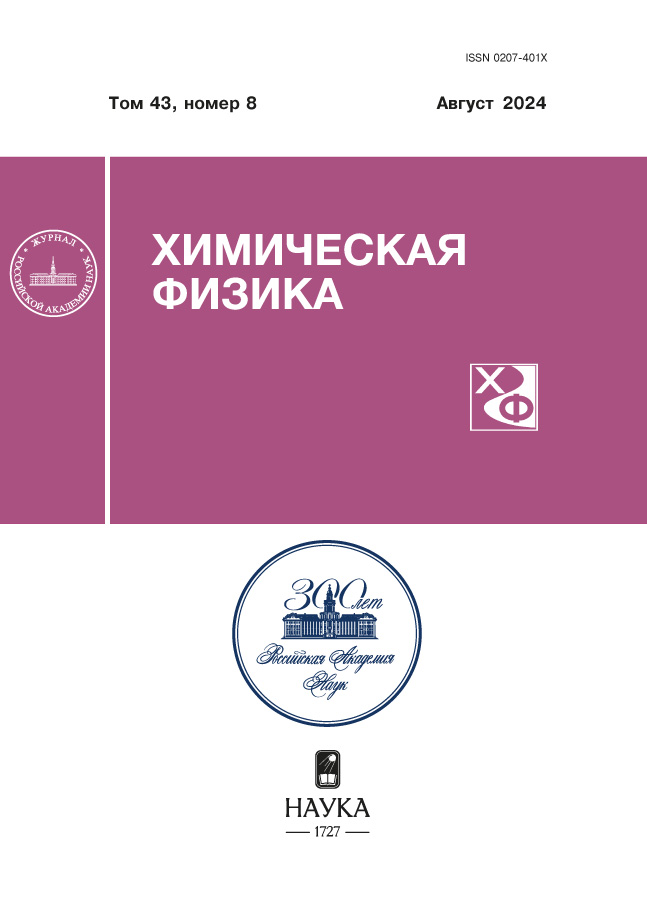Combustion peculiarities in the 2Co–Ti–Al system and properties of half-metallic ferromagnetic Heusler alloy Co2TiAl
- 作者: Busurina M.L.1, Sytschev A.E.1, Vadchenko S.G.1, Karpov A.V.1
-
隶属关系:
- Merzhanov Institute of Structural Macrokinetics and Materials Science, Russian academy of sciences
- 期: 卷 43, 编号 8 (2024)
- 页面: 24-30
- 栏目: Combustion, explosion and shock waves
- URL: https://medjrf.com/0207-401X/article/view/681881
- DOI: https://doi.org/10.31857/S0207401X24080039
- ID: 681881
如何引用文章
详细
Combustion in the 2Co–Ti–Al system was observed by high-speed video recording. It is established that combustion occurs in the frontal mode, and the process parameters are determined. The maximum rate of the combustion temperature increase from the moment of initiation to the maximum value reached 2.7 · 104 K/s. The front propagation velocity calculated from the video recording was 9.4 cm/s. A micro-hotspot mode of combustion of the reaction composition was found. The temperature dependences of the electrical resistivity and magnetic moment of the single-phase Co2TiAl product synthesized in the combustion mode have been measured. For the synthesized Co2TiAl sample, the Curie temperature is Tc = 120 ± 5 K, and the electrical resistivity at room temperature is 1.35 μOhm · m. It is shown that the electrical and magnetic properties of the Co2TiAl alloy obtained in the combustion mode are similar to those of alloys obtained by arc melting.
全文:
作者简介
M. Busurina
Merzhanov Institute of Structural Macrokinetics and Materials Science, Russian academy of sciences
编辑信件的主要联系方式.
Email: busurina@ism.ac.ru
俄罗斯联邦, Chernogolovka
A. Sytschev
Merzhanov Institute of Structural Macrokinetics and Materials Science, Russian academy of sciences
Email: busurina@ism.ac.ru
俄罗斯联邦, Chernogolovka
S. Vadchenko
Merzhanov Institute of Structural Macrokinetics and Materials Science, Russian academy of sciences
Email: busurina@ism.ac.ru
俄罗斯联邦, Chernogolovka
A. Karpov
Merzhanov Institute of Structural Macrokinetics and Materials Science, Russian academy of sciences
Email: busurina@ism.ac.ru
俄罗斯联邦, Chernogolovka
参考
- F. Appel, H. Clemens, F. Fischer, J. Progress Mater. Sci. 81, P. 55 (2016). https://doi.org/10.1016/j.pmatsci.2016.01.001
- S.K. Dolukhanyan, A.G. Aleksanyan, G.N. Muradyan et al, Russ. J. Phys. Chem. B 15, 740 (2021). https://doi.org/10.1134/S1990793121040035
- R. De Groot, F. Mueller, P. Engen et al., Phys. Rev. Lett. 50, 2024 (1983). https://doi.org/10.1103/PhysRevLett.50.2024
- A.N. Vasilyev, V.D. Buchel’nikov, T. Takagi et al., Physics-Uspekhi. 46, 559 (2003). https://doi.org/10.1070/pu2003v046n06abeh001339
- Т. Graf, G. Fecher, J. Barth et al., J. Phys. D: Appl. Phys. 42, 084003 (2009). https://doi.org/10.1088/0022-3727/42/8/084003
- Yu.A Perevozchikova, N.I. Kourov, S.M. Emel’yanova et al, Mezhdunarodnyj zhurnal prikladnyh i fundamental’nyh issledovanij. 3, 539 (2016). https://appliedresearch.ru/ru/article/view?id=8928&ysclid=ll6qs1l7xz185782893
- B. Fadila, M. Ameri, D. Bensaid et al., J. of Magnetism and Magnetic Materials. 448, 208 (2018). https://doi.org/10.1016/j.jmmm.2017.06.048
- M. Koller, T.Chráska, J. Cinert et al., Materials and Design. 126, 351 (2017). https://doi.org/10.1016/j.matdes.2017.04.028
- W. Zhang, L. Zhao, Z. Qian et al., J. Alloys Compounds. 431, 65 (2007). https://doi.org/10.1016/j.jallcom.2006.05.083
- V.I. Itin, Yu.S. Naiborodenko High-temperature synthesis of intermetallic compounds, Tomsk, Ed. by Tomsk University, 1989 [in Russian].
- M. L. Busurina, A.E. Sytschev, A.V. Karpov et al., Russ. J. Phys. Chem. B 14, 999 (2020). https://doi.org/10.1134/S1990793120060020
- S.L. Silyakov, M.Yu. Shiryaeva, A.F. Belikova et al., Russ. J. Phys. Chem. B 16, 290 (2022). https://doi.org/10.1134/S1990793122020129
- J. Liang, L. Zhu, L.V. Wang, Light Sci. Appl. 7, 42 (2018) https://doi.org/10.1038/s41377-018-0044-7
- A.S. Mukasyan, S. Hwang, A.E. Sytchev et al., Combust. Sci.Techn. 115, 335 (1996). https://doi.org/10.1080/00102209608935535
- A.S. Rogachev, A.S. Mukasyan, Combust. Explos. Shock Waves. 51, 53 (2015).
- N.A. Kochetov, B.S. Seplyarskii, Russ. J. Phys. Chem. B 17, 381 (2023). https://doi.org/10.1134/S1990793123020082
- A.S. Rogachev, S.G.Vadchenko, N.V. Sachkova et al., Dokl. Phys. Chem. 478, 27 (2018). https://doi.org/10.1134/S0012501618020021
- M.L.Busurina, A.E. Sychev, I.D. Kovalev et al., Combust. Explos. Shock Waves. 56(3), 317 (2020). https://doi.org/10.1134/S0010508220030089
- S. Mizusaki, T. Ohnishi, T.C. Ozawa et al., Transactions on Magnetics. 47, 2444 (2011). https://doi.org/10.1109/TMAG.2011.2159581
- A.S. Shcherbakov, A.F. Prekul, R.V. Pomorcev, Pis’ma v ZHETF. 32(6), 425 (1980) [in Russian].
补充文件
















